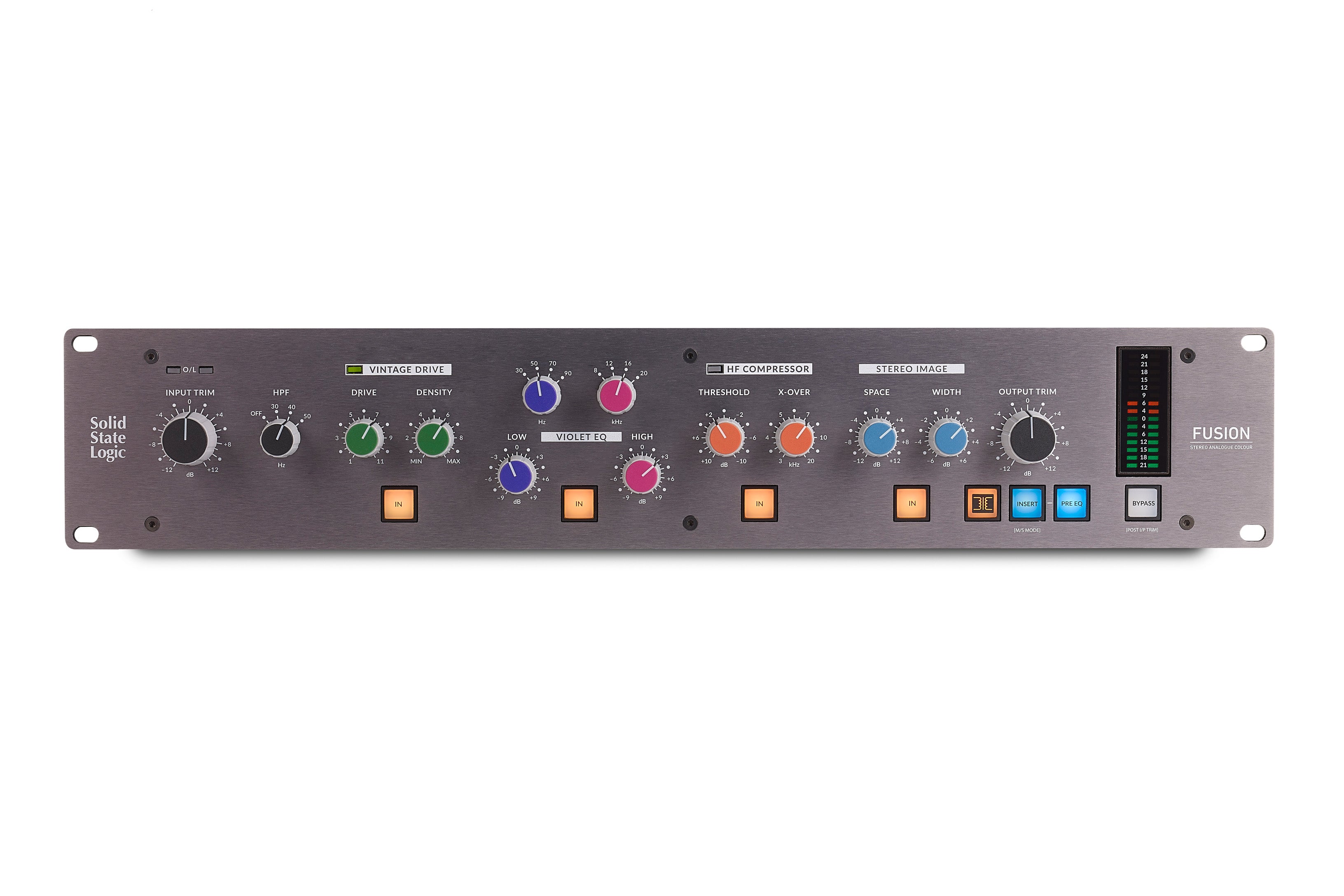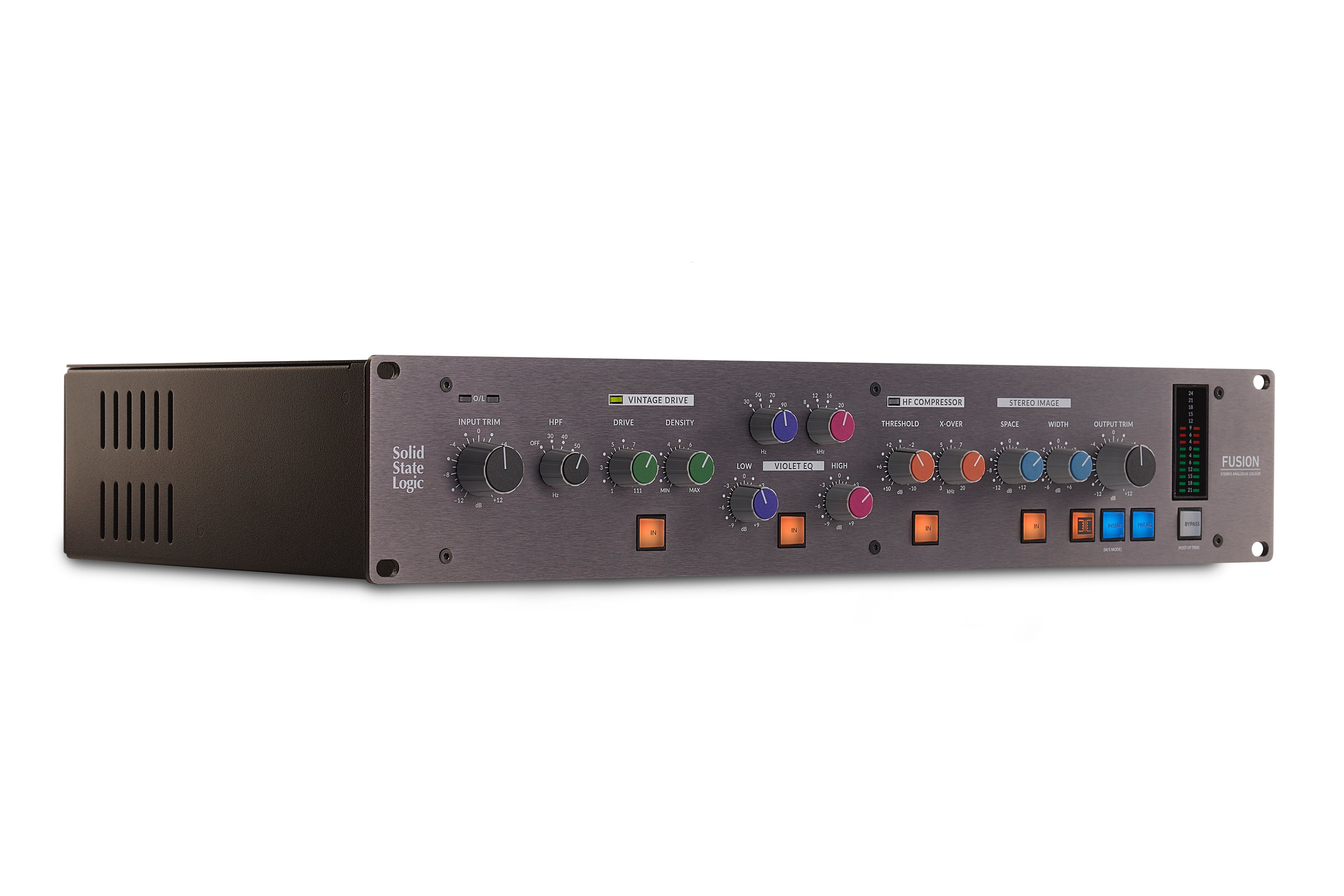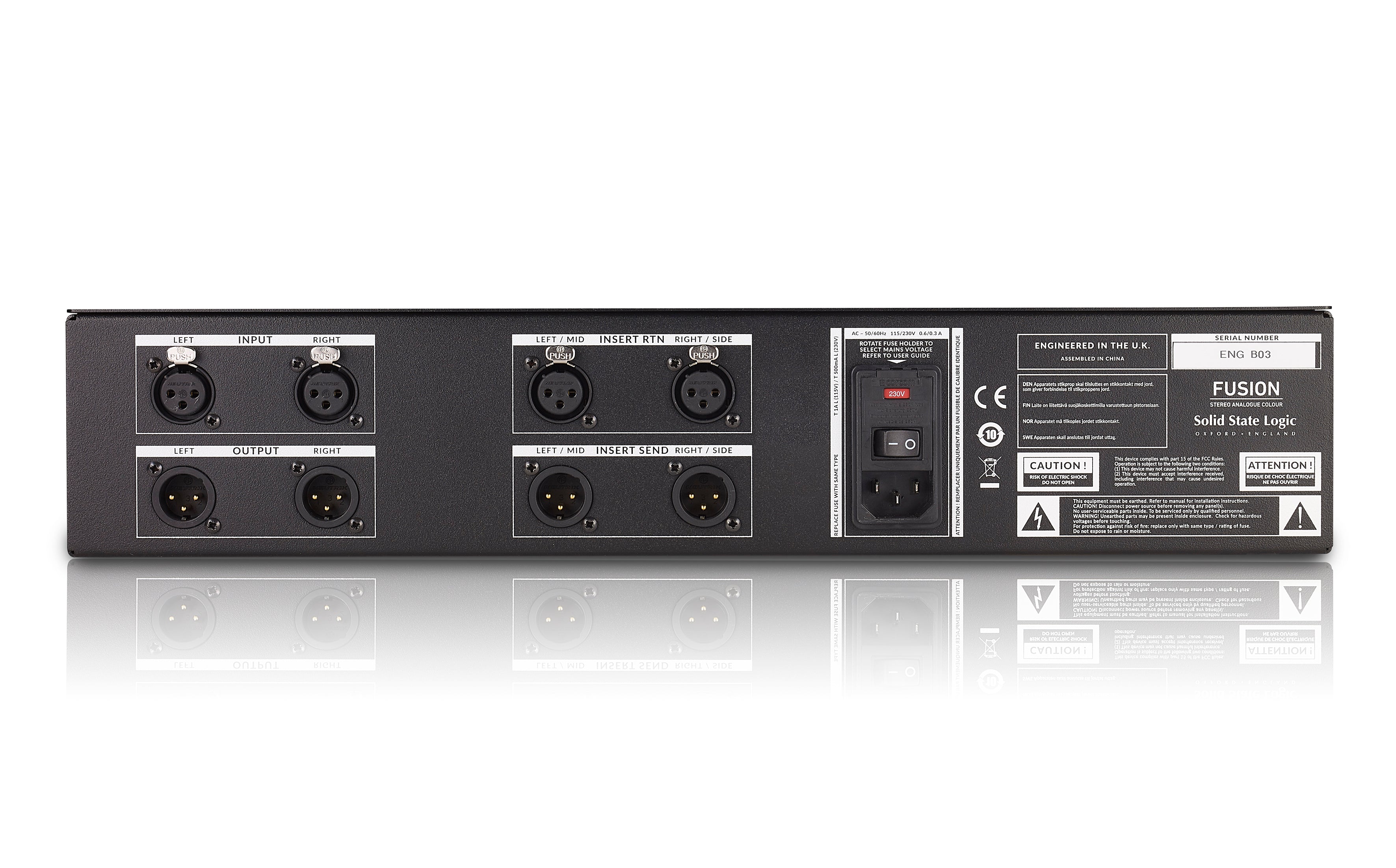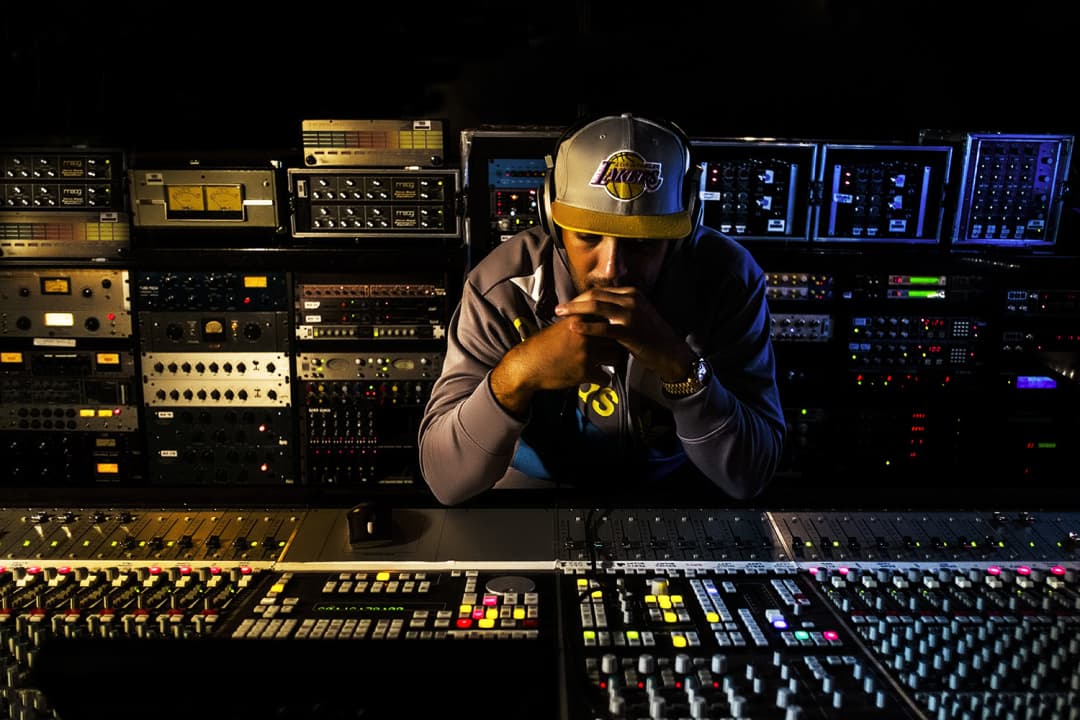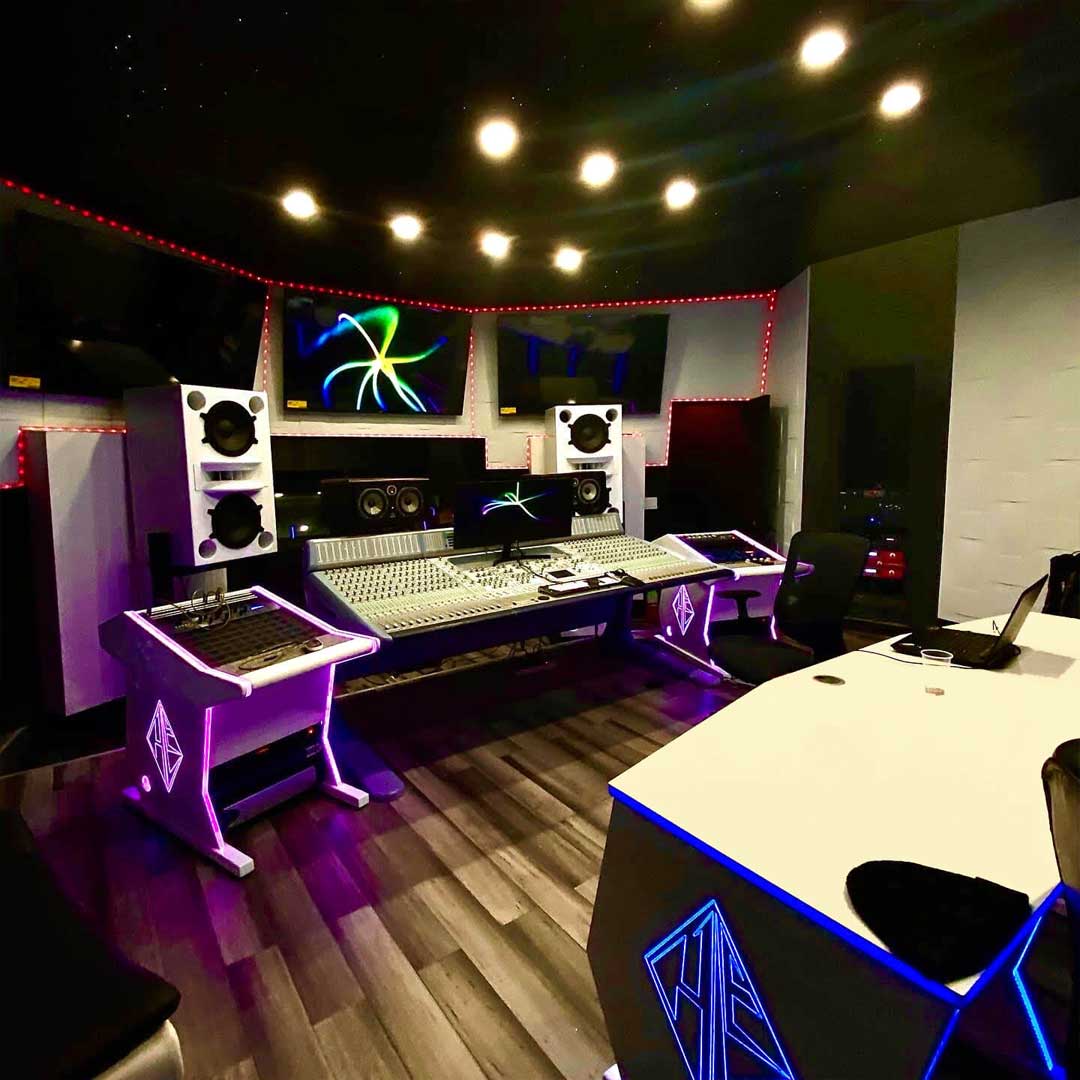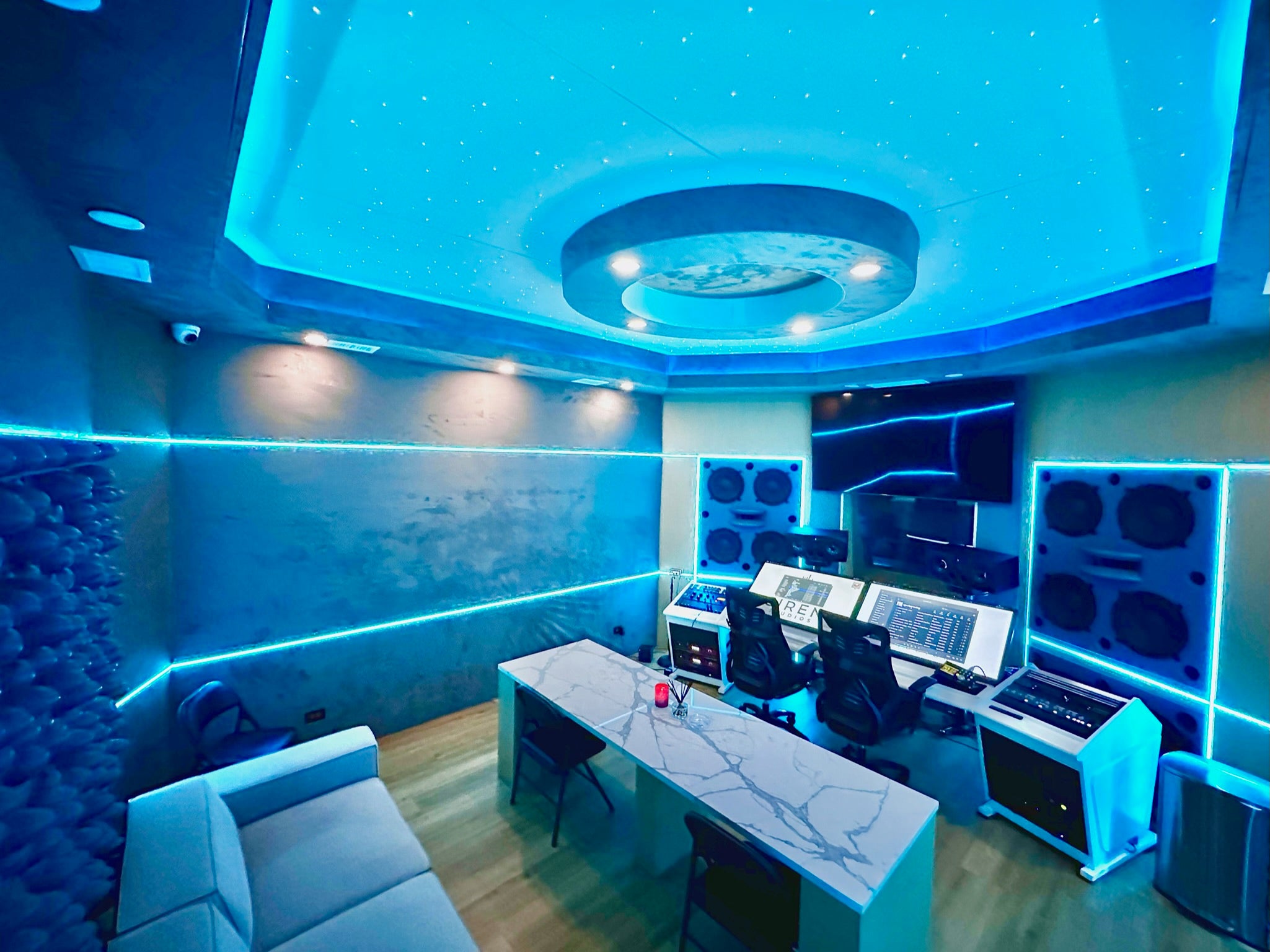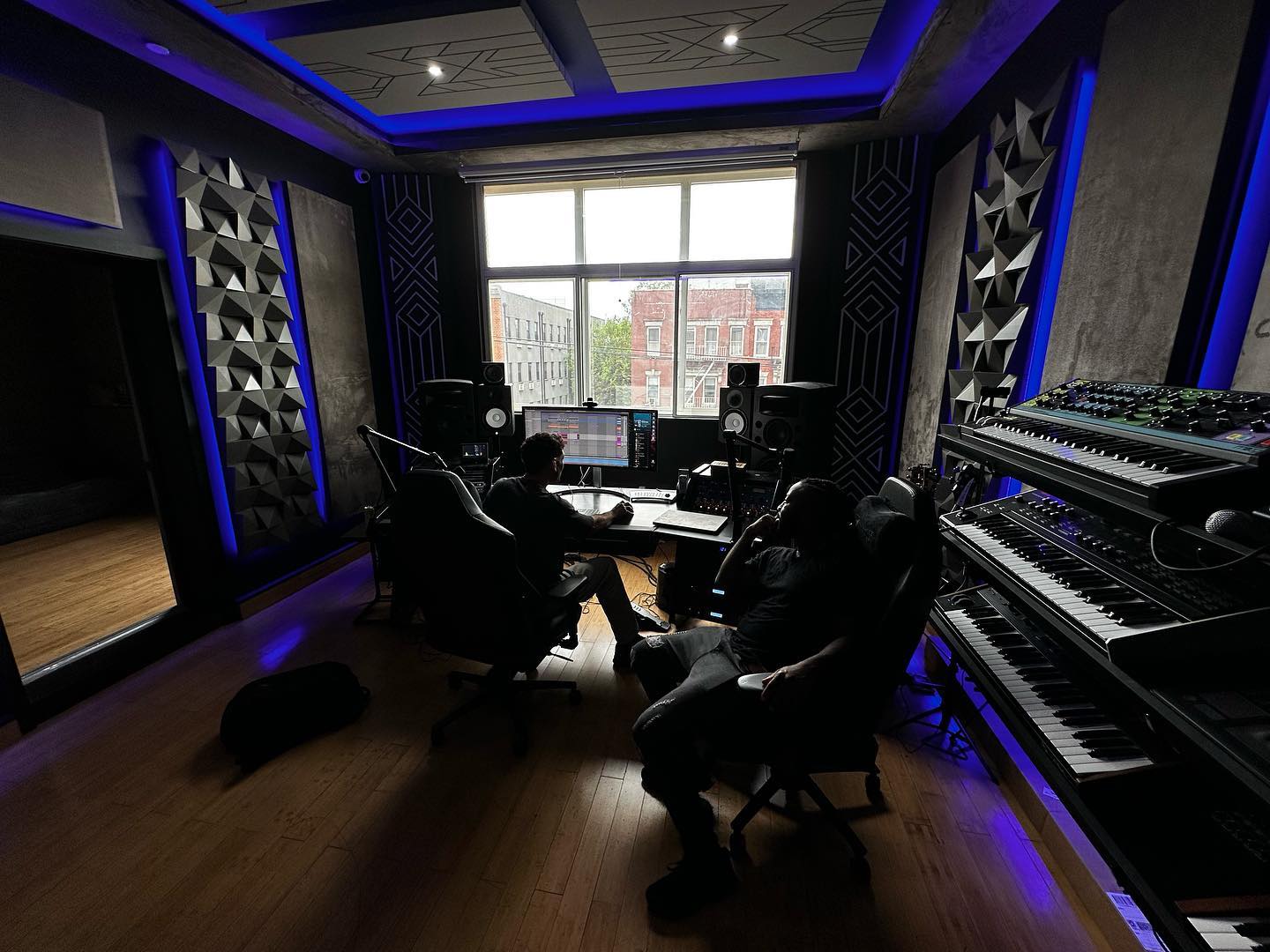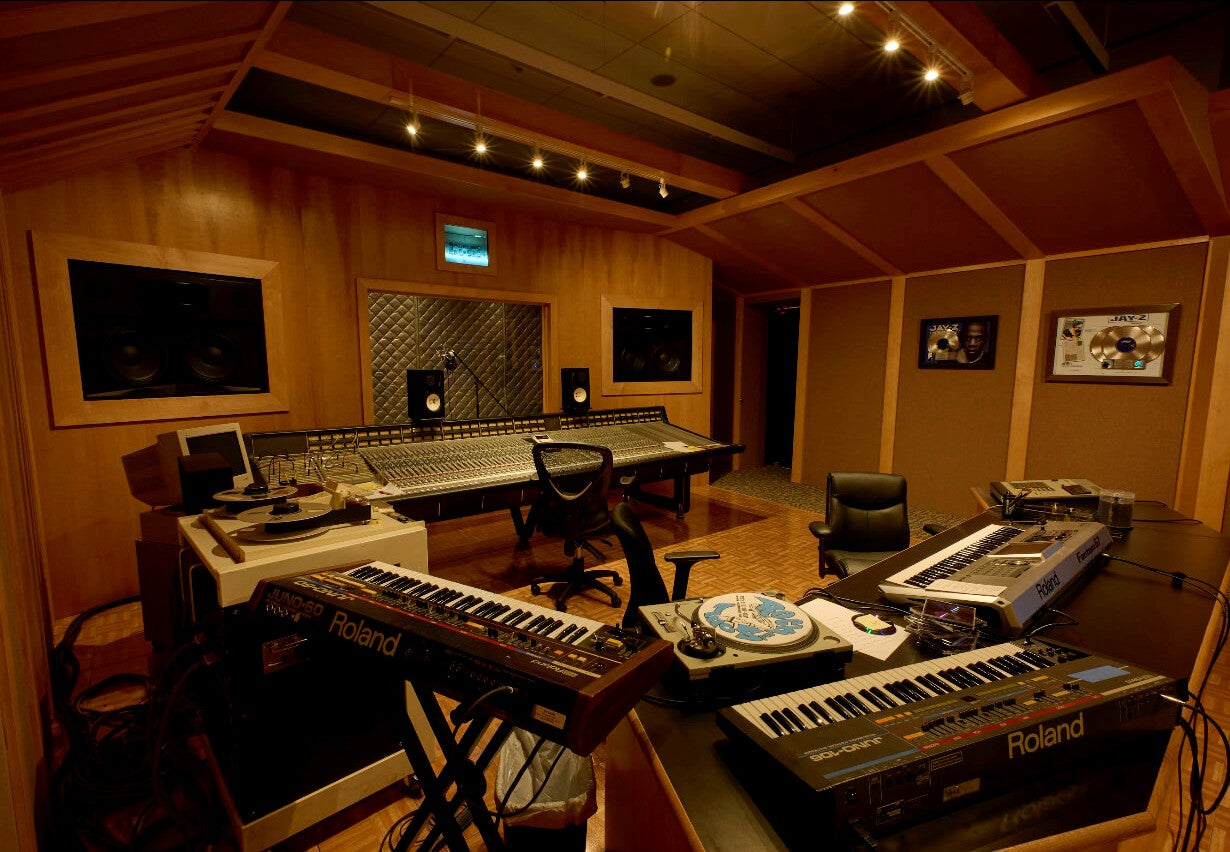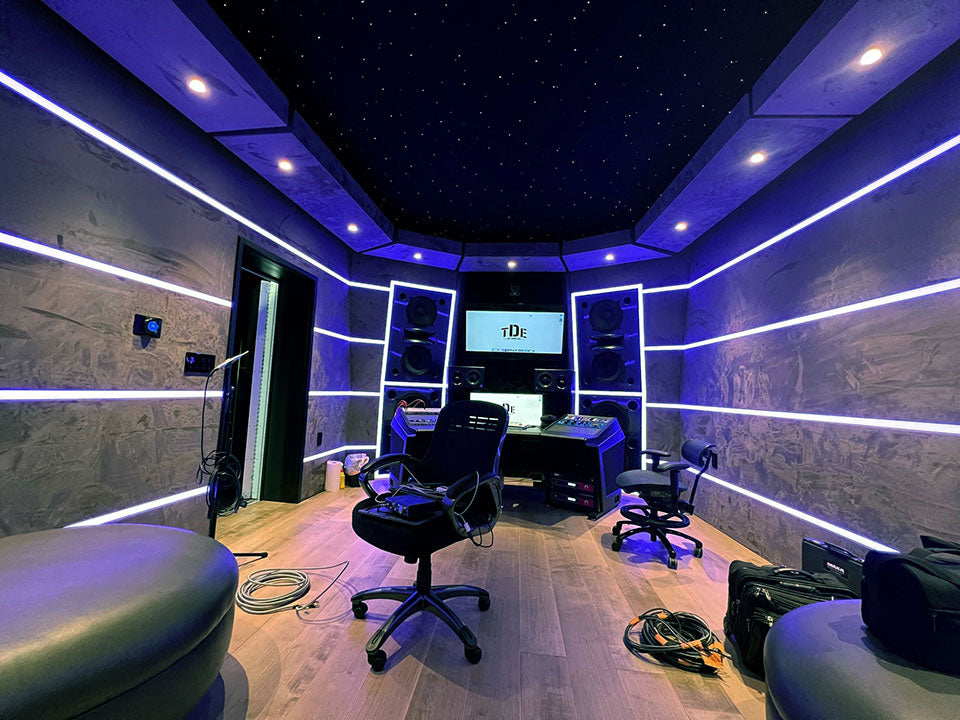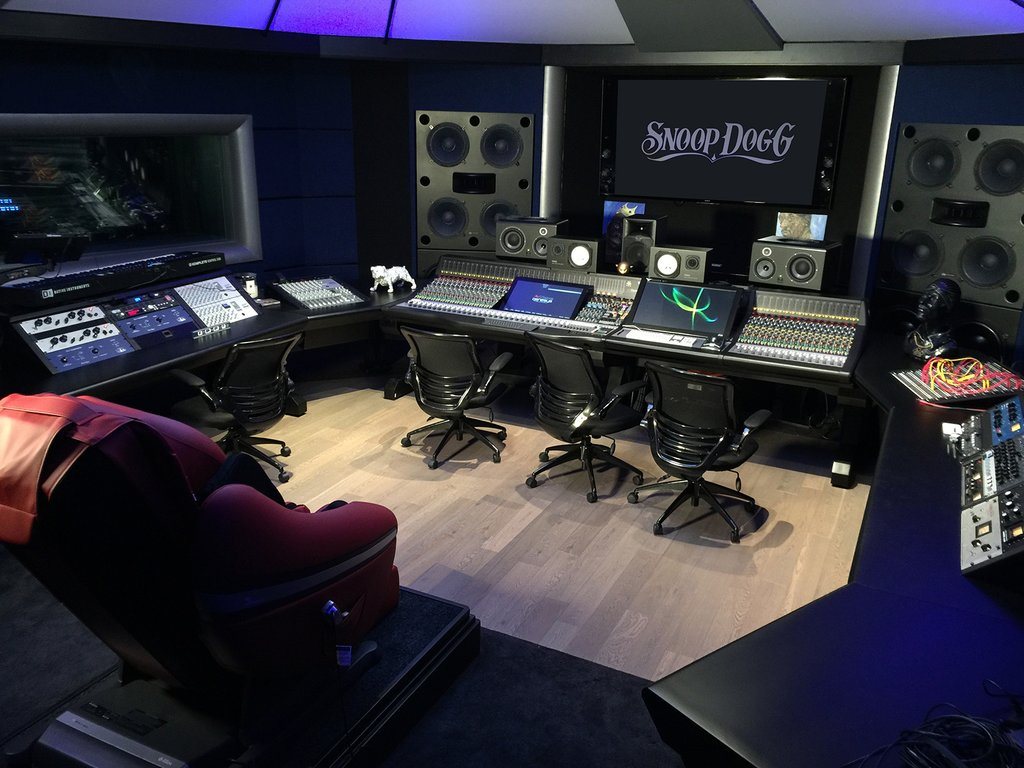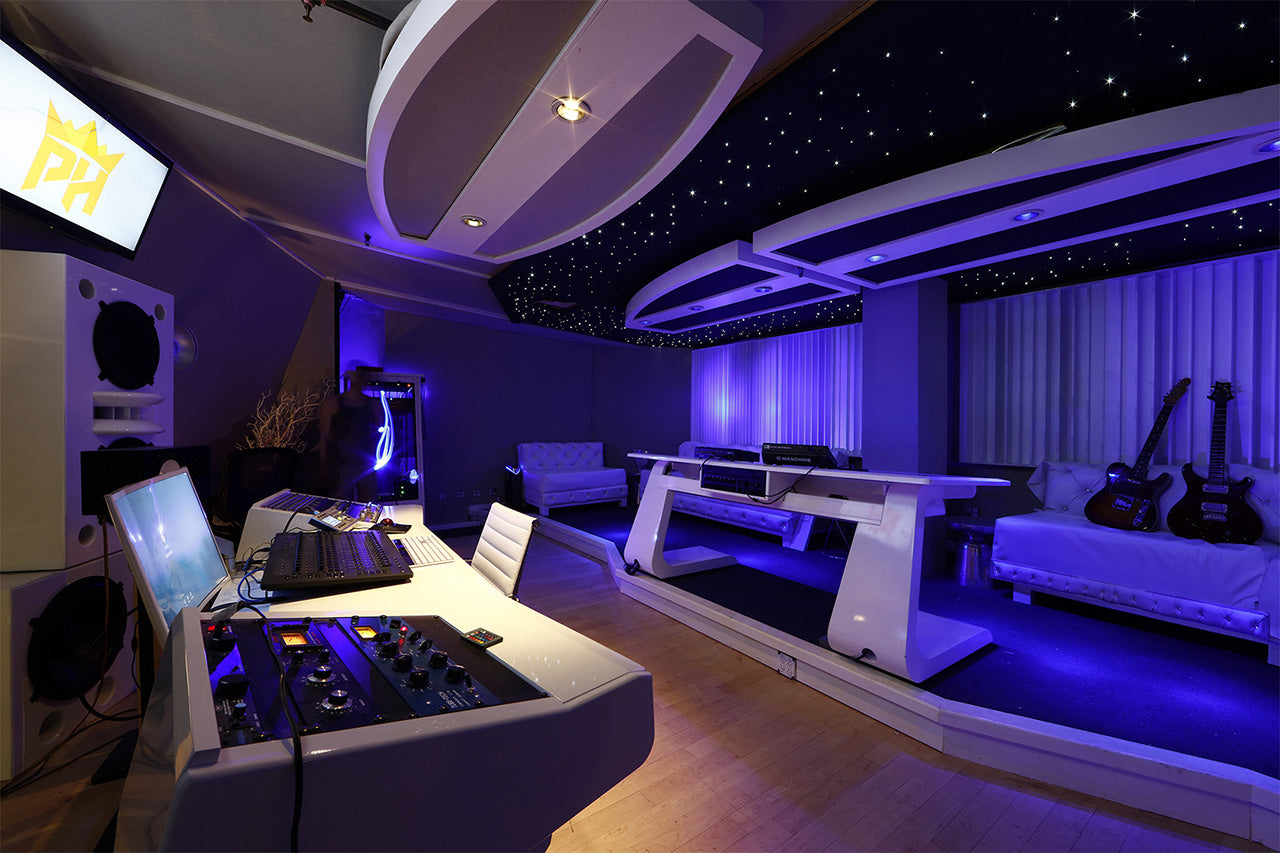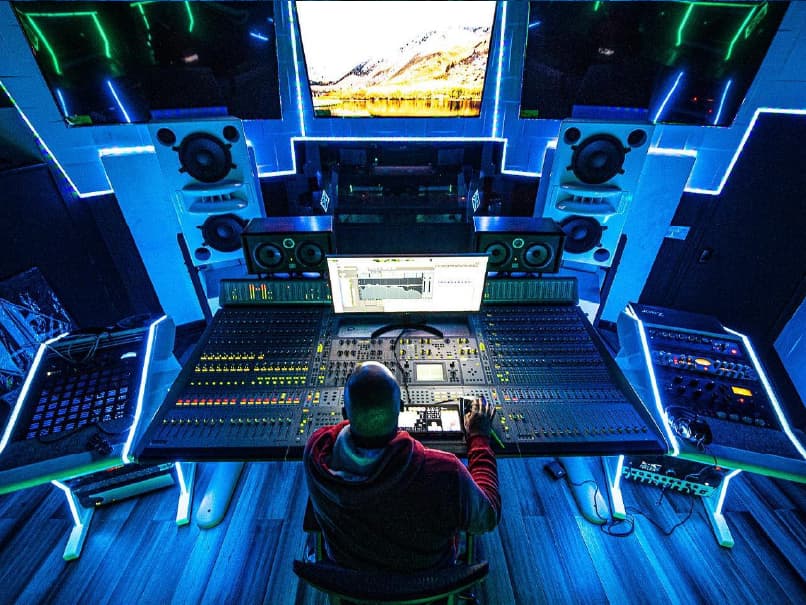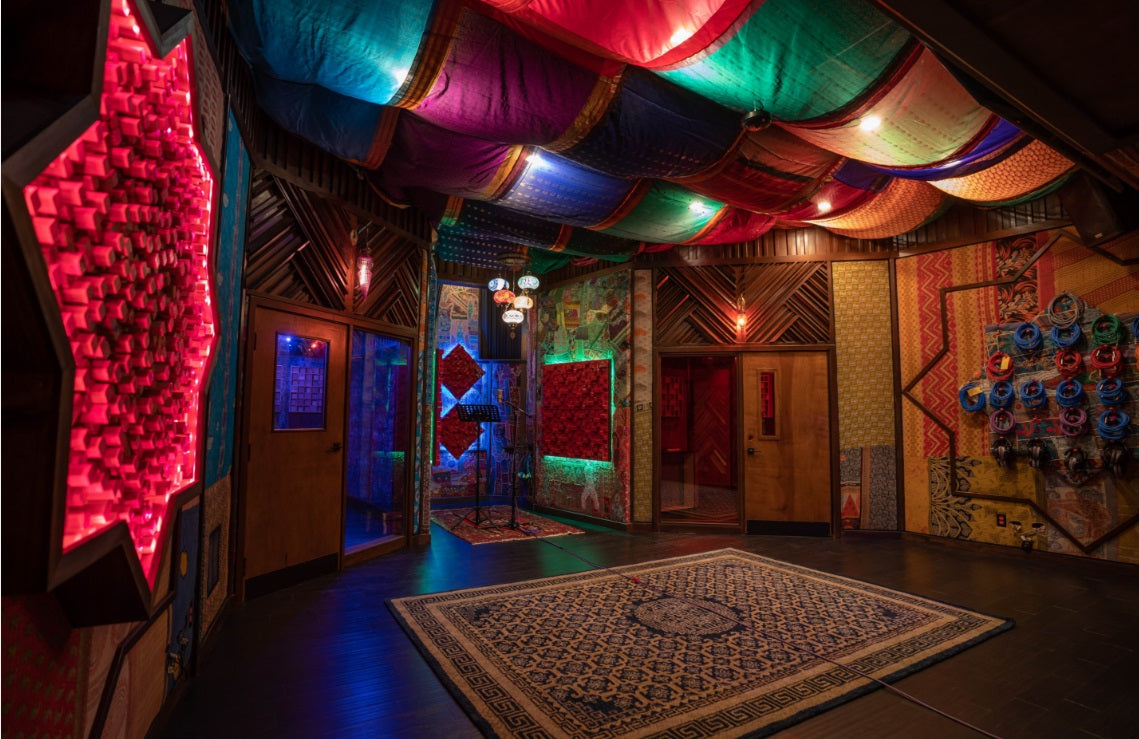The SSL Fusion is a stereo outboard processor that comprises five uniquely SSL coloration tools for tonal character, weight, and space for mix bus or stereo stems
While mixing inside the box has gained in popularity (mostly due to the convenience factor), there are areas where a digital mix falls short. A number of analog modeling plug-ins have arrived on the scene to solve these issues, but at the end of the day, nothing adds weight, dimensionality, space, and sparkle like analog processing - and that's where the SSL Fusion comes in. It comprises five uniquely SSL tools for stereo stem and/or mix bus processing, including Vintage Drive for non-linear saturation; Violet EQ for low-end weight and high-end sheen; High-Frequency Compressor which, like analog tape can tame excessive transients; Stereo Image for mix widening and depth; and the Transformer Circuit, a custom design that introduces subtle low-frequency harmonics for added weight and some high-end sparkle. The SSL Fusion gives you all of these mix tools in a single 2U box for a fraction of what it would cost to have each function in individual hardware units.
Solid State Logic Fusion - Just the Facts:
- Five new SSL analog color circuits:
- Vintage Drive - a unique non-linear saturation circuit designed to bring that cherished gradual analog overload sound you get from pushing vintage equipment into the sweet spot
- Violet EQ - a 2-band, minimum phase-shift shelving EQ offering instant low-end weight and glorious high-end sheen. 4 fixed frequency points for each band with ±9dB boost/cut
- HF Compressor - a high-frequency compressor optimized for smooth taming of unwanted brittle sounds or build-up of top-end fizz
- Stereo Image - a built-in M/S circuit allows for sculpting the side-signal to allow for wider mixes with added depth
- Transformer Circuit - a custom SSL design that introduces subtle low-frequency harmonics for added weight and high-end sparkle
- Built-In Insert Point with two modes of operation:
- Stereo mode allows you to integrate additional outboard gear such as the SSL Bus Compressor. Switchable pre/post the Violet EQ
- Mid/Side mode allows you to insert two different mono outboard processors across the mid and side signals of the mix. Switchable pre/post the Stereo Image controls
- 3rd-order HPF (High-Pass Filter) to clean up unwanted low-end
- SuperAnalogue ±12dB center-indented Input and Output trim controls to help achieve the best possible gain-staging
- Individual bypass switches for each circuit to compare sounds with/without each circuit
- Master Bypass switch with two modes of operation:
- Red mode: complete bypass
- White mode: bypass that includes the Input Trim control
- Master meter with 3-second peak hold segments that switches from output to input metering
- Input clip O/L LEDs, triggered at +27dBu
- Balanced XLR input and outputs throughout for easy and professional studio integration
- Enhanced “dot-dash” screening around controls to allow for easier and clearer recall
- Adjustable front-panel meter and switch brightness to match the vibe of your studio environment
Solid State Logic - Under the Hood
The SSL Fusion was born of requests from professional users asking for a unit that provided the “greatest hits” of analog processing, including:
- A rich analogue EQ with gentle shelving filters
- Smooth top-end rounding in the analog domain
- Additional harmonics and gradual saturation that emerge from an analogue sweet spot
- Wider stereo imaging with more depth via true Mid/Side processing
- Transformer mojo
In the true spirit of Barney Stinson, SSL responded: Challenge accepted! The first circuit to emerge was the Violet EQ, a unique SSL shelving EQ with a refined ±9dB gain range. Next came the HF Compressor circuit as a tool to tame unwanted top-end brittleness and restore a natural analog roll-off (great for taming snare transients). Then came the Vintage Drive circuit, a non-linear saturation circuit tweaked over several months to hone its unique character. The Stereo Image circuit followed as a way of providing the often-missed analog mid-side processing. The final piece of the puzzle, a custom-designed transformer circuit, also involved many rounds of critical listening and reworking to settle on the perfect design. However, the response to audio professionals didn't end there. When the first prototypes were complete SSL sent them off to a selection of trusted engineers and made further adjustments to the circuits based on their feedback.
Designed for easy integration in today's hybrid studio
SSL has also always been known for clever connectivity and features that streamline and accelerate production workflow. As such, it's no surprise that Fusion offers a collection of workflow enhancing features including: +/-12dB Input and Output Trim controls, an Input overload LED, large peak-hold metering, a front-end 3rd-order high-pass filter with three selectable cutoff frequencies, and tricolor status indicators for the Vintage Drive and HF Comp sections. A set of XLR connectors can be used either as a Stereo Insert for stereo mix bus processing or switched to function as a Mid-Side (MS) circuit enabling separate compressors or EQ to be applied to the middle (center) and sides of a stereo signal. In Stereo Insert mode, the insert point can be switched to pre-Violet EQ, and when in MS mode, the insert can be switched to pre-Stereo Image controls. Input and Output connections are via XLR.
Fusion Effects
Vintage Drive

Vintage Drive is a unique, non-linear saturation circuit that gives your mix added strength and cohesion. This circuit is designed to introduce gradual analog overload - the sound that the best vintage analog outboard and consoles offer when you drive level into the sweet spot via the Drive control (which actually goes to 11). To keep the signal under control and ensure that your adjustments are actually doing good things, the Drive control automatically compensates for level increase to prevent louder volumes from fooling your ears (and overloading your converters).
The Density pot in the Vintage Drive section is used to fine-tune the type of effect the circuit produces. Lower settings (generally below 3) produce additional harmonics with an emphasis towards even-order harmonics. Settings between 2 and 3 can help add richness to a mix. Medium to higher settings result in a gradual lowering of the overall harmonic content but with the odd-order harmonics eventually becoming more prominent than the even-order harmonics. The third harmonic is related to the saturation/analog clipping effect that this circuit imparts. This can be thought of as a type of soft-compression, wherein peaks are rounded and the RMS (average) level is brought up. This helps you gain some additional loudness. Settings between 3 and 7 work well for thickening whole mixes.
Violet EQ

One of the most-common practices in production is to mix into an EQ that adds a little bit of top and bottom-end (like New York parallel drum compression). With the Violet EQ, you now have an SSL EQ designed specifically for that purpose. The Violet EQ comprises two bands of carefully selected frequencies and response curves designed to let you quickly dial in low-end weight and high-end sheen. The design is based upon minimum-phase shift shelving filters. The low band offers choices of 30Hz, 50Hz, 70Hz or 90Hz. The high band offers choices of 8kHz, 12kHz, 16kHz, and 20kHz. The gain pots are continuously variable, with indents at the 12 o'clock position (0dB) and allow for ±9dB of gain. Full mixes tend to benefit from a modest amount of 30Hz, 50Hz or 70Hz to add weight, while 8kHz and 12kHz are good starting points for adding tasteful amounts of high-end.
HF Compressor (High Frequency Compressor)

This is a compressor circuit that only compresses high-frequencies. It helps to introduce a tape-like top-end roll-off by taming unwanted brittleness or harshness that can sometimes build up in a mix or individual stem. The cause might be due to over-use of plug-ins with top-end hype. There is no automatic makeup gain as commonly found on digital single-band compressors. This means you will not be fooled by a flattering gain make-up. Another important thing to note is that if the mix is already well balanced and mixed, you may not need to engage this circuit at all! However, when used subtly, it can smooth harshness off in a very pleasing way. On individual stems, such as bass guitars, you can be more aggressive with it.
Stereo Image

The Stereo Image circuit allows for true mid-side processing within Fusion. Mid-Side is a technique commonly used in mastering that separates a stereo signal into two components - one for the sounds in the middle of a stereo image and the other for the sounds on the sides - hence mid-side. The Fusion's Width* control allows you to increase the level of the side signal only, to generally widen or narrow the stereo image. The Space control allows you to experiment with a broad boost or cut of bass frequencies in the side signal. This feature is based upon the often overlooked but quite brilliant “Stereo Shuffling” processing technique. Common wisdom suggests removing bass from the side signals. However, the Space control may have you re-thinking that approach as you can inject some really interesting depth effects into the mix.
Transformer

Fusion features a custom-designed SSL transformer circuit engaged via the front panel transformer switch. This circuit does a number of things: The 600-ohm, 1:1 winding transformer and surrounding circuitry adds low-end harmonic content and a favorable slight top-end phase-shift to the sound. Furthermore, the under-damping of the transformer adds a subtle weight to the sound. The drive of the transformer circuit is self-contained, which means that there's nothing to be gained by driving the input stage of Fusion to achieve more level through the transformer. Also, keep in mind that like transformer designs, extreme low-end frequencies begin to be rolled off the more level is put through. Typically, a level of +16dBu will see a 0.5dB roll off between 40Hz and 30Hz and this is quite often (but not always!) welcome in keeping the bottom-end in check. Experiment with engaging the transformer at any point during the mixing process to see if it makes the mix sound better (it often does).
* PAD For the Record - A feature that all but disappeared from consoles is the width control. Summing a small portion of each channel into the other reduced the width of the stereo image, and was considered desirable by some, since the slightly smaller image would make the image less associated with the speakers, thus enhancing the illusion of acoustic reality. However, in modern times, the common wisdom is that greater isolation between the speakers is required in order to provide a good stereo image. This notion was disproved by the BBC in extensive testing before the days of stereo broadcasting. It was determined that a stereo separation of 20-25dB is all that's needed to provide the illusion of a full stereo width. Of course, once we all fell in love with hard-panned heavy guitars, the idea was to find a way to de-correlate a mix from the speakers by making it wider, and mixing “outside the speakers” became a highly desired but elusive goal. It was discovered that cross-feeding anti-phase signals would increase the stereo image. In 1972, Mullard Research Laboratories published a famous circuit that provided continuous variation from mono to normal stereo to enhanced-width stereo. The caveat was not to sum more than 24% of the phase-inverted, stereo-flipped mix into the main mix or it would break the stereo image into two halves.
Insert
Fusion features a stereo insert point, which provides the ability to introduce other outboard processors such as the SSL G-Series Bus Compressor. A Pre EQ switch allows the insert point to be moved ahead of the Violet EQ section in the signal path. Pressing and holding the Insert switch for two seconds will cause it to enter Mid-Side mode. This provides the option of using one piece of mono outboard equipment to process the mid signal only and another to process the side signal (a common mastering technique). Pressing the Pre EQ switch in M-S mode moves the insert ahead the Stereo Image circuit.
Bypass (Standard Mode)
The Bypass switch allows you to bypass all of Fusion's processing blocks. If the switch is red, you are in standard bypass mode. Use this to compare the sound of the mix with/without Fusion in one easy action. It dimly lights white if you are not in bypass.
Bypass (Post I/P Trim)
Pressing and holding the Bypass switch for two seconds will cause it to enter Post Input Trim bypass mode. In this mode, the Input Trim pot still affects the sound, even in bypass. This mode is a useful feature if you've had to make up or take off significance amounts of gain using the input trim.
Output Trim
The Output Trim control, which is center detented, provides ±12dB gain at the output stage of Fusion. This control is important in order to compensate for any level increases caused by the receding sections.
Master Meter
The master meter allows you view the main output level of Fusion. With a three-second peak hold, the scale is referenced in dBu, with +24dBu at the top. The trick is not to max out this meter. Full mix material should be typically peaking between +9dBu and +15dBu, and occasionally as high as +18dBu. Ensure that the output level of Fusion does not exceed the operating input level of your A/D converter, otherwise it will clip.
TIP: When Bypass is engaged, the master meter automatically becomes an input level meter so you can see your incoming level in more detail.
The SSL Fusion is an all-in-one mix or stem processing tool that gives you the power to craft your mixes like we did in the golden age of analog wrapped in the stunning sound of SSL's SuperAnalogue signal path. Order yours now. For more information, call or chat online with your PAD Studio Specialist today.
Videos
Specifications
Audio Performance
Input Impedance
Output Impedance
Max Input Level
Max Output Level
Frequency Response (All circuits off)
- ±0.05dB (20Hz to 20kHz)
- < 5Hz (-3dB low rolloff)
- >180kHz (-3dB high rolloff)
THD+Noise
- All Circuits Off: < 0.005%, 0.0025% - +20dBu, 1kHz (filter 22Hz to 22kHz)
- Bypass: 0.0005% typical, +20dBu, 1kHz (filter 22Hz to 22kHz)
- Vintage Drive (Indicator off): < 0.2% typical
- Vintage Drive (Indicator green): 0.2% to 0.5% typical
- Vintage Drive (Indicator orange): 0.5% to 2% typical
- Vintage Drive (Indicator red): > 2% typical
CMRR
- 78dB, 85dB typical (20Hz)
-
> 78dB, 88dB typical (1kHz)
Noise (Analyzer filters/BW: 22Hz to 20kHz (AES17)
- All circuits off: < -86dBu, -91dBu typical
- Bypass: -94dBu typical
- Vintage Drive, Mid Drive, Mid Density: -75dBu typical
Crosstalk (Analyzer filters/BW: 22Hz to 20kHz (AES17). Generator +24dBu into one channel, analyzer on the other channel; generator connected but not active)
- All circuits off/Bypass: < -110dB, -115dB typical (1kHz); -110dB typical (20Hz)
Stereo Matching
- All circuits off / Bypass: < 0.01dB
- Vintage Drive on: < 0.25dB (typical)
Physical
- Depth: 11-15/16" / 303 mm (chassis only); 12-15/16" / 328mm (total including front panel controls)
- Height: 3-1/2" / 88.9 mm (2 RU)
- Width: 19" / 480 mm
- Power: 50W maximum, 40W typical
- Unboxed Weight: 12.9 lb. / 5.86 kg
- Boxed Size: 21-11/16" x 18-1/2" x 8-15/16" (550 mm x 470 mm x 225 mm)
- Boxed Weight: 21.2 lb. / 9.6 kg
Default test conditions (unless otherwise stated):
-
Source impedance of Test Set: 50 ohm
-
Input impedance of Test Set: 100k ohm
-
Reference frequency: 1kHz
-
Reference level: 0dBu
-
All un-weighted measurements are specified as 22Hz to 22kHz band limited RMS and are expressed in units of dBu
-
The onset of clipping (for headroom measurements) should be taken as 1% THD
-
Measurements taken with Input and Output trim at center position.
-
All levels are intended balanced
Unless otherwise quoted all figures have a tolerance of ±0.5dB or 5%.
